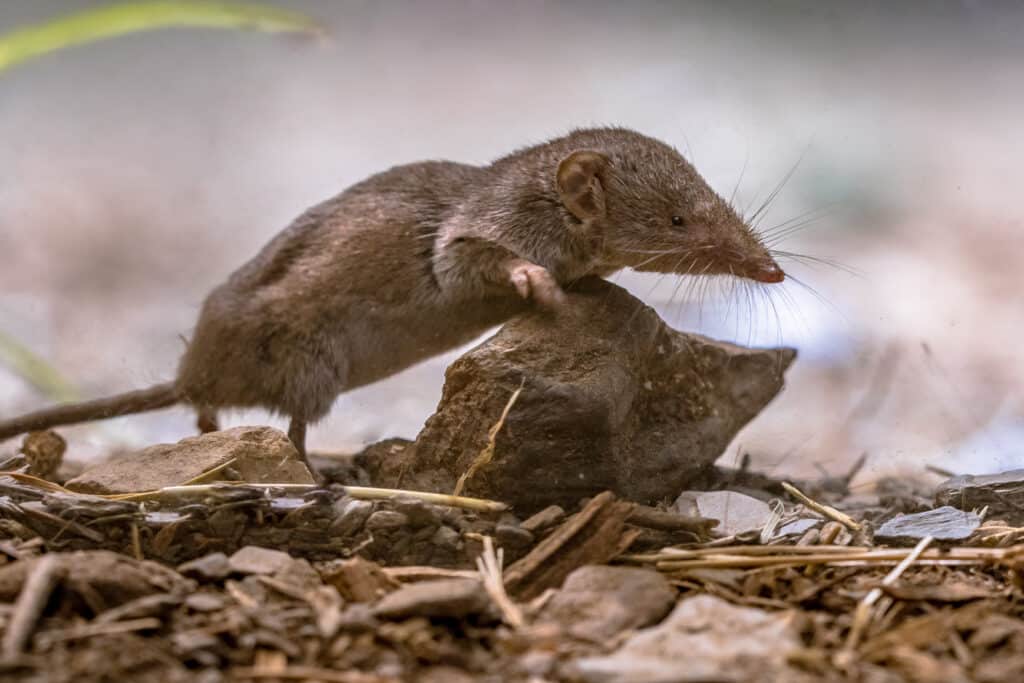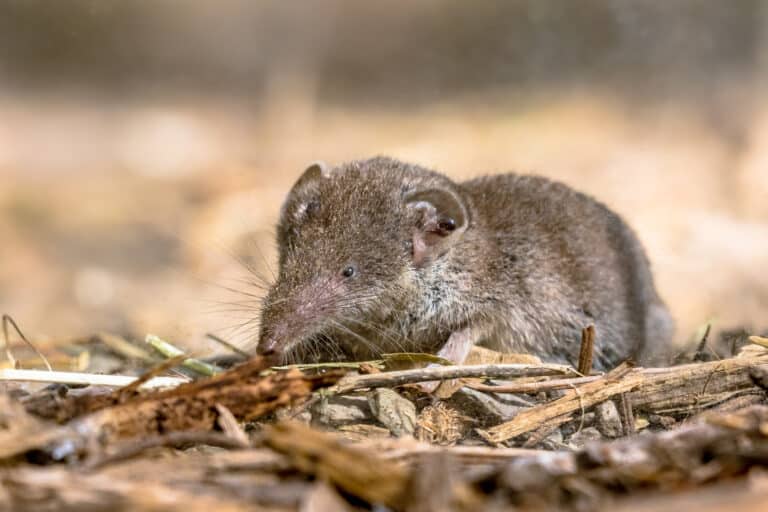Facts about Shrews
Common Shrew: Sorex araneus
Pygmy Shrew: Sorex minutus
Water Shrew: Neomys fodiens
(Greater white-toothed Shrew: Crocidura russula)
(Lesser White-toothed Shrew: Crocidura sauveolens)
At a glance
- Britain has three native species of shrew, with two others introduced or invasive.
- They are key prey items for Tawny and Barn Owls, Stoats, Weasels, and Foxes.
- Water Shrews have a toxin in their saliva which helps stun their prey.

The more than 300 species of shrew are found almost everywhere in the world, including gardens, grasslands, deserts and tundra.
While external appearances generally suggest a long-nosed mouse, shrews are not rodents and are actually closer relatives of hedgehogs and moles. They have a long-pointed snout (giving all shrews an acute sense of smell used when hunting) with small ears and eyes. They have a very short life-span and it is uncommon for them to live for more than 12 months.
Along with smaller bat species, shrews are amongst the smallest mammals found in the UK. Fierce hunters, there are three native species here: Common, Pygmy and Water Shrews are all found commonly throughout mainland Britain. The Greater White-toothed Shrew is found as an invasive species in Ireland but in the UK was only found on the Channel islands of Guernsey and Alderney until the mainland’s first record in 2021 in Sunderland (the species is widespread in Europe and North Africa). The Lesser White-toothed Shrew has been introduced here: the famous ‘Scilly Shrew’ is this species and is unusual in that it can be found on the islands’ beaches where it feeds almost exclusively on amphipods.

As its name suggests, the Common Shrew is very widespread across the UK and is one of our most numerous mammals. It’s found throughout mainland Britain and has also been introduced to many islands with the notable exception of Ireland, the Outer Hebrides, and Shetland. It is replaced on Jersey by the very similar French shrew (Sorex coronatus). It has one of the highest metabolic rates of all mammals and has to eat almost continuously (at least every every 2-3 hours) just to survive.
The Pygmy Shrew is one of Britain’s smallest mammals – at less than 5g only Pipistrelle bats weigh as little. Widespread and very common, they consume one and a quarter times their body weight each day (unlike Common Shrews, though, they do not eat earthworms). Active by day and night, they are very territorial and aggressive for their size.
The largest of Britain’s shrews, the Water Shrew is found throughout mainland Britain, most often in habitats close to water, including the banks of streams, rivers, garden ponds, ditches, and reed-beds. They dive repeatedly looking for food like caddisfly larvae, occasionally taking prey as large as frogs, newts and small fish. Unusual amongst mammals, Water Shrews have a toxin in their saliva which helps stun their prey.
Despite their tiny size and relative inconspicuousness, shrews are extremely important members of ecosystems across Britain. Not only does the presence or absence of shrews indicate the health, diversity and abundance of soil life, they are key prey items for many predators including Tawny and Barn Owls, Stoats, Weasels, and Foxes.
